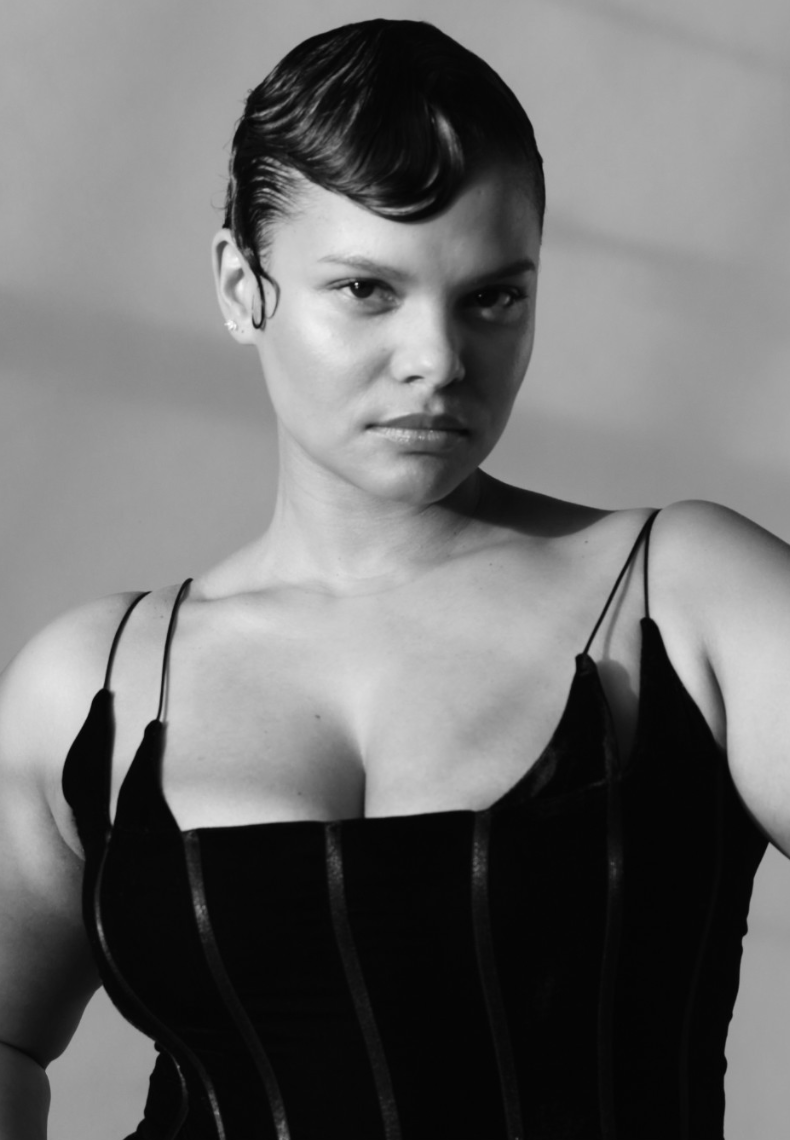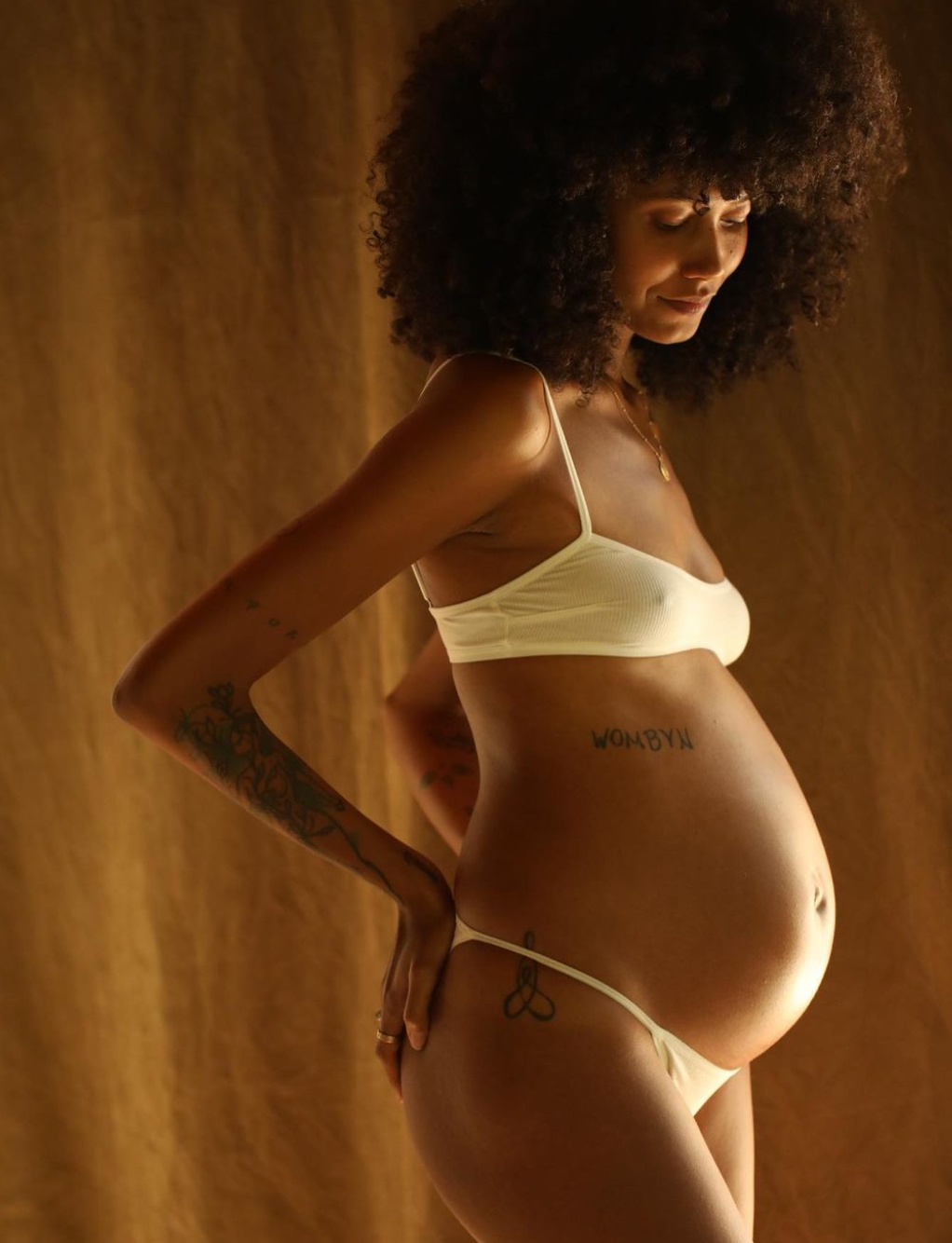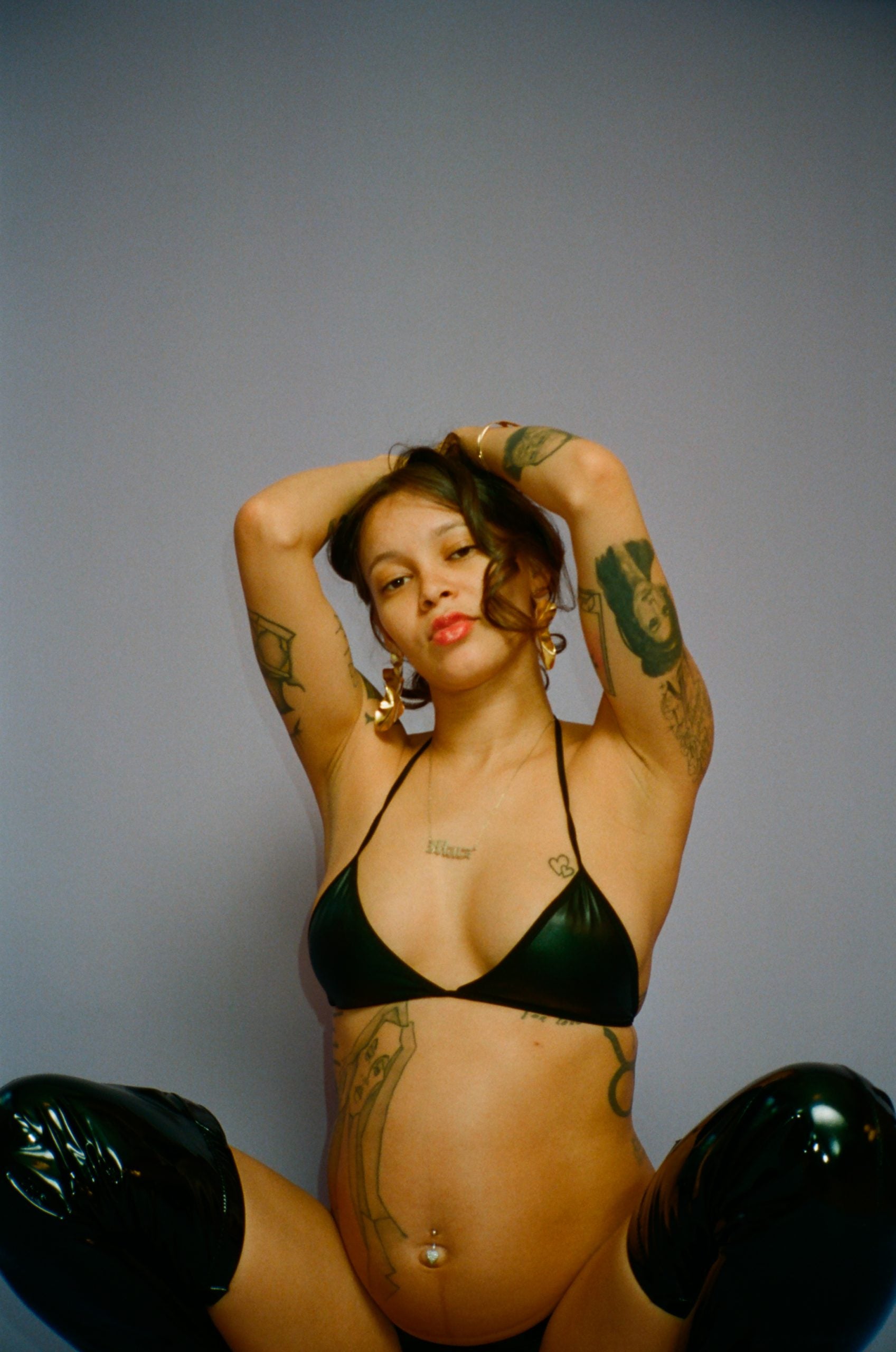
A model’s career lies in the fact that they must fit the mold of a client or agency. The fashion industry at large has come a long way from its days of encouraging unhealthy beauty standards. But inclusion and diversity are still areas that have yet to be fully realized. Black women’s bodies in particular have been under scrutiny and painful subjections for centuries not limited to conversations on hypersexualization.
Since it’s Black Maternal Health Week, we wanted to honor women in fashion who are often seen as objects or a product, models. These individuals who are either currently pregnant, new moms, or have been pregnant during their career are allowing themselves to be vulnerable about their pregnancies. They’re also doing so while dominating their respective career paths. Some of these women were very open about their pregnancies, how they dressed while expecting, and how they navigated throughout their careers like community beacon Marz Lovejoy. She took the Rihanna route with her pregnant belly exposed for the world to see at fashion presentations, regularly posting online, and modeling throughout her pregnancy. Other women felt protective of their changing bodies, not sharing about their pregnancy until they were comfortable like model Coral Kwayie.

Either way, the choice to express yourself as a pregnant woman, let alone a Black model, is a radical act of bodily autonomy. Something that the modeling industry used to do was strip someone of their bodily autonomy. In the past, pregnancy was a marker of a model’s career coming to a close. Frankly, pregnancy has been a discriminatory tool in most industries. This was a concern that model Lesie Sidora had throughout her pregnancy until her birth. Sidora just wasn’t sure how she’d be received by clients. She noticed her bookings were dwindling until finally, she wasn’t booking gigs from April 2023 through January 2024. Post-birth, she felt more pressure than ever in her career to “snatch back” her body.
“I remember hysterically crying when seven months pregnant because I saw stretch marks on my bell for the first time,” Sidora shared with ESSENCE. She also pondered if her body didn’t go back to how it looked post-pregnancy would she be able to book work? “I was 3 months postpartum, going to Pilates twice a week and working out the rest of the week until I couldn’t do it anymore, ” she said. Sidora admits she was rushing herself and her body into a regimen that wasn’t working for her new life as a mother.

Eventually, Leslie divested from a scarcity mindset in the modeling industry. Instead, she shifted and decided to embrace taking time to rest and enjoy motherhood. She moved to a JAG Models new agency that championed her as a mother and started to rebuild after a period. “I needed this industry break more than I know I did and I’m really excited for what’s to come,” Sidora added.
Sydney Porter was pregnant with her first child when she signed at her first-ever agency in 2019. At the time she didn’t know she was pregnant. She decided not to work while pregnant but entered back into the industry four months postpartum. “I’d be lying if I didn’t say that I was somewhat nervous about how my body would change after the birth of our daughter,” she shared in an email. Porter shared that she’d bring her daughter on every shoot and would often breastfeed her on set.
“I had naturally lost a lot of weight from breastfeeding and the new responsibilities of motherhood,” she expressed.” But I was also getting used to the new addition of stretch marks, [the] unevenness in my breasts, weakness in my pelvic floor, all while my body was on display,” Porter added.

Once she became pregnant again with her second son Porter knew she wanted to work with maternity brands so that she could embrace her full belly. After months of worrying about her changed body, it was refreshing for her to work in an environment where it was not just accepted but celebrated. “I believe that we are entering into a much healthier and more sustainable era of modeling where we as models are valued as whole people, not just for the image that we bring to the table,” Porter noted.
Community-driven organizer and Black maternal health advocate Marz Lovejoy wanted to change what pregnancy looked like. She modeled often throughout her pregnancies and dressed fashionably to ensure her belly was seen. After becoming a mother, Lovejoy decided to become a birth worker, and eventually become a student midwife. She now sits on the board of the Black Home Birth Initiative in Minnesota, founded by Bee Jackson. Other Black maternal health-centered work Lovejoy is involved with are Mama Glow based in New York, and Gather Grounded Midwifery Birth Cottage in Virginia.

“While fashion will always be a part of my life, I am honored to be called to birthwork and appreciate anyone who is using their platform and/or position to advance, educate, and support Black life,” Marz shared. Lovejoy has been just as much a Black maternal health inspiration as she’s been a fashion inspiration with an overflow of resources to share with mothers in her communities. When asked about Black midwife or doula recommendations, her heart smiles with pride.
During Lovejoy’s career as a model, host, and creative in the magazine world, her pregnancies became a catalyst for larger conversations around Black women’s maternal health. She was able to have three home births with Black midwives and doulas. This made her realize that all Black mothers should be afforded this option, peacefully with the resources they need, if they choose.
She credits Black birthworkers for saving the lives of Black women who face disproportionate mortality rates while giving birth in hospitals due to racism. “I am extremely invested in the health, safety, and well-being of Black mothers, babies, and birthing people,” Lovejoy added.
Donate or learn more about the Black Home Birth Initiative on www.bhbi.org.







